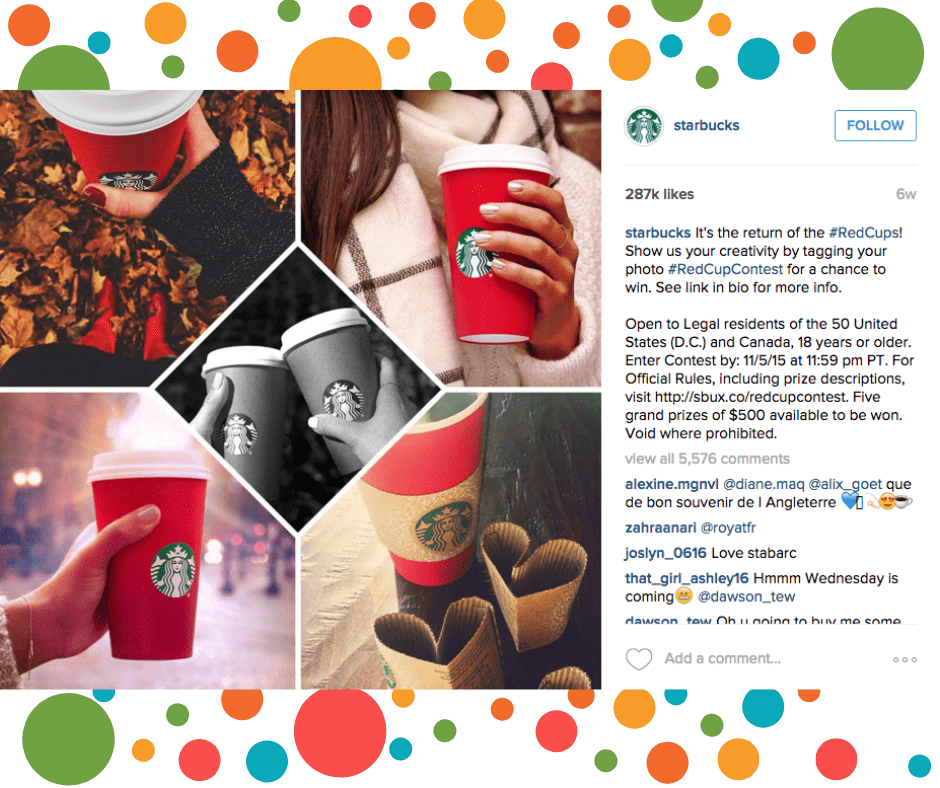In the current digital marketing landscape, social media is one of the most powerful tools for marketers to engage with their target audience. For Gen Z consumers, social media is not just a means of communication but an integral part of their lifestyle, shaping their behavior and influencing their purchasing decisions.
It’s crucial for brands to understand how social media plays an essential role in Gen Z’s purchasing decisions and why it matters for their marketing strategy. In this article, we will explore the impact of social media on Gen Z’s purchasing behavior, the social media platforms that Gen Z uses the most, the rise of influencer marketing, the importance of user-generated content, and social media advertising.
Who is Gen Z?
Gen Z, born between 1997 and 2012, is the generation that succeeded Millennials. They are the first generation born and raised in a digital era, shaping their unique characteristics and preferences.
Gen Z values inclusivity, diversity, and social causes more than previous generations. They are also more likely to value experiences over material possessions and prefer brands that align with their values.
According to a study by DoSomething Strategic, 85% of Gen Z consumers are more likely to support a brand that supports a social cause they believe in.
Gen Z consumers also have significant purchasing power. Gen Z’s global spending power will reach $33 trillion by 2030, making them the fastest-growing consumer segment in the world. They also influence their parents’ purchasing decisions, with 93% of parents saying their Gen Z children have at least some influence on family spending, according to a study by Harris Poll.
Case Study: Nike

Nike is a brand that has successfully targeted Gen Z consumers with its inclusive and diverse marketing campaigns. The brand’s “Dream Crazier” ad, featuring female athletes breaking barriers, was well-received by Gen Z consumers for its message of empowerment and inclusivity. Nike’s approach has paid off, with the brand experiencing an 11% increase in sales following the campaign, according to a report by Edison Trends.
Social Media Platforms Used by Gen Z
Gen Z is a generation that grew up with social media, and it has become a crucial part of their daily lives.
According to a report by GlobalWebIndex, 98% of Gen Z consumers have a social media account, and they spend an average of 2 hours and 22 minutes daily on social media platforms.
So, what social media platforms do Gen Z use the most? Let’s take a look:
- Instagram: Instagram is the most popular social media platform among Gen Z consumers worldwide. According to Statista, 79% of Gen Z consumers aged 16 to 24 use Instagram, and 65% use the platform multiple times daily. Instagram is a visual platform that allows users to share photos and videos, making it an ideal platform for brands to showcase their products and engage with consumers.
- TikTok: TikTok has exploded in popularity among Gen Z consumers worldwide, with a 325% increase in downloads in 2020 alone, according to a report by App Annie. In the UK, for example, 70% of Gen Z consumers use TikTok, with 54% using the platform daily, according to a report by GlobalWebIndex. The platform’s short-form videos, music, and user-generated content have made it a go-to platform for Gen Z entertainment and product discovery globally.
- Snapchat: Snapchat has been popular among Gen Z consumers for years worldwide. According to a report by GlobalWebIndex, 56% of Gen Z consumers use Snapchat, and 29% use the platform multiple times a day. Snapchat’s ephemeral nature, augmented reality features, and user-generated content make it a unique platform for brands to engage with consumers.
- Twitter: Twitter may not be as popular as other social media platforms among Gen Z consumers, but it still has a significant presence globally. In India, for example, 50% of Gen Z consumers use Twitter, with 34% using the platform daily, according to a report by GlobalWebIndex. Twitter’s real-time conversations, hashtags, and brand engagement make it a valuable platform for brands to connect with consumers.
As you can see, Gen Z uses a variety of social media platforms to discover, engage with, and purchase products worldwide. The following section will explore how social media influences Gen Z’s purchasing behavior.
The Impact of Social Media on Gen Z’s Purchasing Behavior
Social media has profoundly impacted how Gen Z consumers shop, their decision-making process, and their brand loyalty. Here are some ways in which social media has influenced Gen Z’s purchasing behavior:
- Product Discovery: Social media has become a primary source of product discovery for Gen Z consumers. According to a report by GlobalWebIndex, 41% of Gen Z consumers worldwide use social media to learn about new products or services. Social media allows brands to reach Gen Z consumers where they are most active and showcase their products in a way that resonates with them.
- Reviews and Recommendations: Social media has also become a platform for Gen Z consumers to seek peer reviews and recommendations. 75% of Gen Z consumers worldwide rely on social media to make purchasing decisions, and 61% have bought a product after seeing a social media ad. Social media influencers also play a significant role in Gen Z’s purchasing behavior, with 68% of Gen Z consumers saying they trust influencers more than traditional celebrities, according to a study by Morning Consult.
- Brand Loyalty: Social media has made it easier for Gen Z consumers to connect with their favorite brands and develop brand loyalty. According to a report by Accenture, 65% of Gen Z consumers globally feel that brands should offer a personalized experience, and social media allows brands to tailor their messaging and engage with consumers on a more personal level. Social media is also a platform for Gen Z consumers to voice their opinions and connect with brands that share their values and beliefs.
- Influencer Marketing: Social media influencer marketing has become popular for brands to engage with Gen Z consumers. Influencers allow brands to reach Gen Z consumers authentically, driving brand awareness and sales. According to a report by Influencer Marketing Hub, the global influencer marketing industry was valued at $13.8 billion in 2021 and will grow to $22.3 billion by 2025.
Social media has become an essential tool for brands to influence Gen Z’s purchasing behavior. Social media allows brands to showcase their products, engage with consumers, and develop brand loyalty. The next section will explore how product marketing managers can leverage influencer marketing to reach and engage with Gen Z consumers.
Influencer Marketing
Influencer marketing has become a popular strategy for product marketing managers to engage with Gen Z consumers. Influencers, who are social media personalities with a large following and a significant impact on their followers’ behavior, provide product marketing managers with an opportunity to reach and engage with Gen Z consumers in a more authentic and relatable way.
Here are some ways in which influencer marketing impacts Gen Z’s purchasing decisions:
- Authenticity: Influencers are known for their authenticity and relatability, which is particularly important for Gen Z consumers. According to a report by Morning Consult, 90% of Gen Z consumers say authenticity is essential when deciding which brands to support. Influencers provide an opportunity for product marketing managers to reach Gen Z consumers in a genuine and trustworthy way.
- Product Discovery: Influencers also play a crucial role in product discovery for Gen Z consumers. According to a study, 44% of Gen Z consumers globally discover new brands and products through social media influencers. Influencers allow brands to showcase their products in a way that resonates with Gen Z consumers through sponsored content, product reviews, and giveaways.
- Trust: Influencers are trusted by their followers, and their recommendations can significantly impact Gen Z’s purchasing decisions. According to a report by Morning Consult, 54% of Gen Z consumers have made a purchase based on a recommendation from a social media influencer. Influencers can allow brands to drive sales and build brand loyalty by leveraging their influence and connecting with Gen Z consumers.
Here are some ways in which product marketing managers can leverage influencer marketing to reach and engage with Gen Z consumers:
- Find the Right Influencer: The key to successful influencer marketing is finding the right influencer who resonates with your brand and target audience. Brands should look for influencers with a large following, a high engagement rate, and a similar brand ethos. The influencer should also have a genuine interest in the product and be able to promote it to their followers authentically.
- Set Clear Goals and Objectives: Brands should set clear goals and objectives for their influencer marketing campaign, such as increasing brand awareness, driving sales, or building brand loyalty. They should also measure the campaign’s success through metrics like engagement rates, clicks, and sales.
- Collaborate with Influencers: Brands should collaborate with influencers to create sponsored content that resonates with Gen Z consumers. The content should be authentic, visually appealing, and aligned with the brand’s values and messaging.
Case Study: Gymshark

Gymshark, a UK-based fitness apparel company, is a prime example of a brand that has successfully leveraged influencer marketing to attract a Gen Z audience. The company was founded in 2012 by Ben Francis, who was only 19 years old at the time, making him a relatable figure for Gen Z consumers.
Gymshark has worked with a variety of social media influencers to promote its products, from fitness personalities to fashion bloggers.
One of the most successful influencer campaigns was with Nikki Blackketter, a fitness influencer with over 1 million Instagram followers. Gymshark sponsored Blackketter’s workout videos and provided her with clothing to wear during her workouts, which she promoted to her followers.
The campaign was a huge success, with Gymshark experiencing a 214% increase in sales in the US during the first month of the campaign. The company also gained over 100,000 new Instagram followers thanks to the exposure from Blackketter’s followers.
Gymshark has continued to work with influencers to promote its products, but the company has also leveraged user-generated content to engage with its Gen Z audience. The company encourages its customers to share photos and videos of themselves wearing Gymshark apparel on social media, which the company then shares on its social media accounts. This approach has successfully created a community around the brand and built brand loyalty among its Gen Z audience.
Gymshark has successfully leveraged influencer marketing to attract a Gen Z audience and has continued to engage with its audience through user-generated content. The company’s approach has been authentic and relatable, making it a go-to brand for Gen Z consumers interested in fitness apparel.
Influencer marketing has become a popular strategy for product marketing managers to engage with Gen Z consumers. Influencers provide an opportunity for brands to showcase their products, drive sales, and build brand loyalty in a way that is authentic and relatable. In the next section, we’ll explore the importance of user-generated content in engaging with Gen Z consumers.
User-Generated Content (UGC)
User-generated content (UGC) is any content created by consumers rather than brands. UGC can take many forms, such as photos, videos, reviews, and social media posts. UGC is becoming increasingly crucial for brands who want to engage with Gen Z consumers, as it allows consumers to connect with brands on a more personal level.
Here are some reasons why UGC is essential for brands:
- Builds Trust: UGC is an effective way to build trust with Gen Z consumers. 68% of Gen Z consumers trust online reviews and UGC more than brand-generated content. UGC provides a sense of authenticity and transparency, which is particularly important for Gen Z consumers who value honesty and realness in their interactions with brands.
- Increases Engagement: UGC also increases engagement with Gen Z consumers. According to a report by Stackla, UGC is 20% more likely to influence a purchase than brand-generated content. UGC is more likely to be shared, liked, and commented on, making it a powerful tool for product marketing managers to drive brand awareness and sales.
- Builds Brand Loyalty: UGC is also an effective way to build brand loyalty among Gen Z consumers. According to Adweek, 76% of Gen Z consumers have posted about a brand on social media, and 60% have created content about a brand. Encouraging UGC can create a sense of community around a brand and foster a sense of loyalty among Gen Z consumers.
Here are some ways in which brands can incorporate UGC into their marketing strategy:
- Social Media Contests: Brands can host social media contests that encourage consumers to create UGC. For example, a fitness apparel brand could host a contest asking consumers to post photos of themselves working out in the brand’s apparel. This approach creates a sense of community and fosters engagement with the brand.
- Hashtags: Product marketing managers can create branded hashtags encouraging consumers to post UGC on social media. For example, a beauty brand could create a hashtag asking consumers to post photos of themselves using their products. This approach makes it easy for brands to track UGC and engage with consumers creating content about the brand.
- Reviews and Testimonials: Brands can incorporate UGC into their product pages, such as reviews and testimonials from satisfied customers. This approach provides social proof that can increase trust and confidence in the brand.
Case Study: Starbucks

Starbucks, the global coffee giant, has successfully incorporated user-generated content into its marketing strategy. The company has a massive social media presence, with over 20 million followers on Instagram and over 35 million on Facebook.
Starbucks has encouraged UGC by creating hashtags that customers can use to share their photos of Starbucks products. One of the most successful campaigns was the “Red Cup Contest,” which asked customers to share photos of themselves with the iconic red holiday cup on social media. The campaign generated over 40,000 UGC posts on Instagram and Twitter and increased engagement with the Starbucks brand during the holiday season.
Starbucks has also leveraged UGC in its product development, using customer feedback to create new products and flavors. For example, the company’s Pumpkin Spice Latte was inspired by customer requests for a fall-themed drink.
The company’s approach to UGC has successfully built trust and loyalty among its Gen Z audience. According to a report by Sprout Social, Starbucks is the second most loved brand among Gen Z consumers, after Netflix.
UGC is an effective way for brands to build trust and increase engagement and brand loyalty among Gen Z consumers. Incorporating UGC into a marketing strategy can create a sense of community around a brand and foster more authentic and transparent interactions with consumers. In the next section, we’ll explore the future of social media and its impact on Gen Z’s purchasing behavior.
Social Media Advertising
Social media advertising is a powerful tool for brands to reach Gen Z consumers. Social media platforms like Facebook, Instagram, TikTok, and Snapchat offer a variety of ad formats and targeting options that can be tailored to a brand’s specific needs.
Here are some types of social media ads that brands can use to reach Gen Z consumers:
- Sponsored Posts: Sponsored posts are ads that appear in a user’s feed and are designed to look like organic posts. Sponsored posts can increase brand awareness, promote a specific product or service, or drive sales.
- Stories Ads: Stories ads are full-screen ads that appear in a user’s Stories feed. Stories ads can be used to showcase a brand’s products or services in a visually engaging way and can be especially effective in driving sales and conversions.
- Influencer Ads: Influencer ads are created and posted by social media influencers rather than the brand itself. Influencer ads can be a powerful tool for product marketing managers to leverage the influence of popular social media personalities and reach Gen Z consumers in an authentic and relatable way.
Here are some best practices for social media advertising to reach Gen Z consumers:
- Be Authentic: Gen Z consumers value authenticity and transparency and can quickly spot fake or misleading ads. Brands should aim to create genuine, relatable, and visually engaging advertisements.
- Use Influencers: As we discussed earlier, influencers can be a powerful tool for reaching Gen Z consumers. Brands should collaborate with influencers who resonate with their brand and target audience and who can create content that is both visually appealing and authentic.
- Be Mobile-First: Gen Z consumers spend significant time on their mobile devices, so brands should ensure that their ads are optimized for mobile. Ads should be visually engaging, easy to read and load quickly.
- Use Targeting Options: Social media platforms offer various targeting options that can reach specific audiences. Brands should use targeting options like age, location, interests, and behaviors to ensure their ads reach the right audience.
Case Study: Shopee

Shopee, a Singapore-based e-commerce platform, launched a successful social media advertising campaign targeting Gen Z consumers in Asia.
The company, founded in 2015, has become one of Southeast Asia’s most popular e-commerce platforms, with a strong presence in Singapore, Malaysia, Indonesia, and the Philippines.
Shopee’s social media advertising campaign focused on the “Shopee 9.9 Super Shopping Day,” a major annual shopping event. The campaign used a variety of social media ad formats, including sponsored posts, stories ads, and influencer ads, to promote the event and drive sales.
One of the most successful aspects of the campaign was using influencer ads. Shopee collaborated with popular social media influencers in Southeast Asia, such as Siti Badriah in Indonesia, Jannine Weigel in Thailand, and Phan Kim Liên in Vietnam, to create ads that showcased the platform’s products and promotions in an authentic and relatable way.
The influencer ads were a hit with Gen Z consumers, generating over 20 million views and 6 million engagements on Instagram and TikTok. The campaign also successfully drove sales, with Shopee reporting a 150% increase in orders during the “Shopee 9.9 Super Shopping Day” compared to the previous year.
Social media advertising is a powerful tool for product marketing managers to reach Gen Z consumers. By using different types of ads and targeting options, and following best practices like authenticity, influencer marketing, and mobile optimization, product marketing managers can engage with Gen Z consumers in a way that resonates with them. In the next section, we’ll explore the role of social media in the future of commerce and how product marketing managers can prepare for it.
Key Takeaways
In today’s digital age, social media is essential for brands to reach Gen Z consumers. From influencer marketing to user-generated content, social media offers a variety of opportunities for brands to engage with their target audience and drive sales.
Here are some key takeaways from this article:
- Gen Z consumers are digital natives who value authenticity, transparency, and realness in their interactions with brands.
- Social media platforms like Instagram, TikTok, Snapchat, and Twitter are the most popular among Gen Z consumers.
- Influencer marketing is a powerful tool for brands to leverage the influence of social media personalities and reach Gen Z consumers in an authentic and relatable way.
- User-generated content effectively builds trust, increases engagement, and builds brand loyalty among Gen Z consumers.
- Social media advertising offers a variety of ad formats and targeting options that can be tailored to a brand’s specific needs.
Here are some actionable tips for brands to effectively leverage social media in their marketing strategy:
- Be authentic and transparent in your interactions with Gen Z consumers.
- Use influencers and user-generated content to create an authentic and relatable brand image.
- Incorporate social media advertising into your marketing strategy to reach a wider audience.
- Be mobile-first and use targeting options to ensure your ads reach the right audience.
- Use social media analytics to track your performance and adjust your strategy as needed.
By following these tips, brands can effectively leverage social media to engage with Gen Z consumers and drive sales. Social media is constantly evolving, so staying up-to-date with the latest trends and best practices is essential to succeed in this dynamic landscape.
Want to learn more about Gen Z? Download The Definitive Guide to Gen Z.



